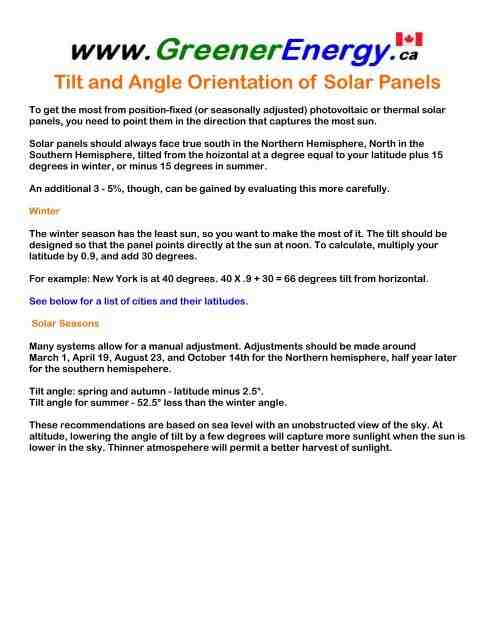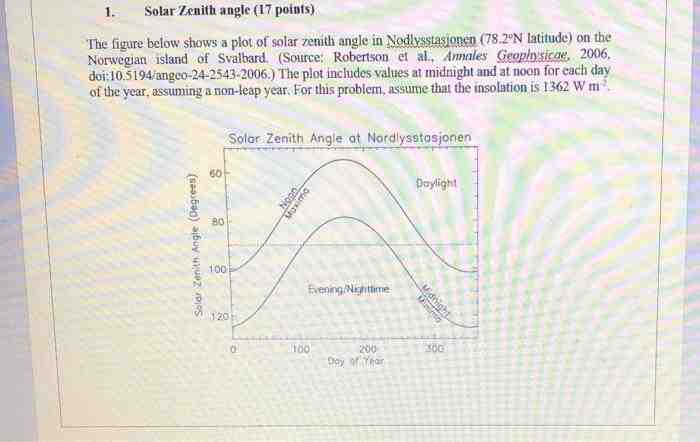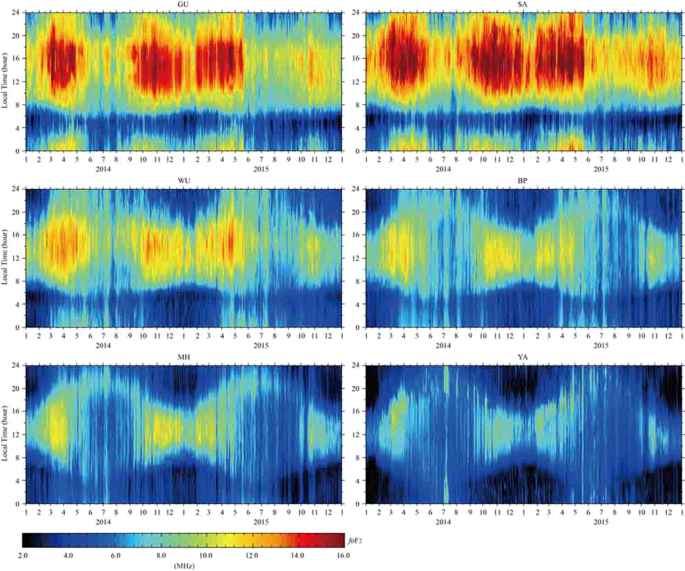Contents
How is solar elevation calculated at noon?

How do you calculate meridional altitude?
calculation
- Draw and label the poles. Label the height arc of the pole above the horizon. …
- Draw and label the celestial equator. Label its height arc above the horizon. …
- Draw the object whose meridian height will be measured. …
- Calculate the height of the meridian: height of the celestial equator + declination of the star.
How do I calculate altitude?
Techniques for calculating the density height
- Subtract the current altimeter setting from the default pressure of 29.92.
- Multiply by 1,000.
- If you have a negative number, subtract it from the field height. Add a positive number.
What is the sun altitude at noon?
The height of the sun is the angle of the sun relative to the horizon of the earth and is measured in degrees. The height is zero at sunrise and sunset and can reach a maximum of 90 degrees (directly above the head) at noon at latitudes close to the equator.
What is the zenith angle at solar noon?

The solar zenith angle is the angle between the sun’s rays and the vertical direction. … At noon on the sun the zenith angle is minimal and corresponds to the latitude minus the solar declination angle. This is the basis on which ancient sailors sailed the oceans.
What is 3 pm hour angle?
Answer: The angle between the hour and minute hands at 3:00 p.m. is 90 °. A clock has an angle of 360 ° in the middle. Explanation: … Thus the angle between the hour hand and the minute hand at 3:00 p.m. is 3 × 30 ° = 90 °.
What is solar apparent time?
Apparent solar time, or true solar time, is based on the apparent movement of the actual sun. It is based on the apparent solar day, the interval between two successive returns of the sun to the local meridian. The apparent solar time can roughly be measured with a sundial.
How do you find the solar zenith angle?

The zenith angle is the angle between the sun and the vertical. The zenith angle is similar to the elevation angle, but is measured from the vertical rather than the horizontal, so the zenith angle = 90 ° elevation.
How azimuth angle is calculated?
The azimuth angle is like a compass direction with north = 0 ° and south = 180 °. Other authors use a variety of slightly different definitions (i.e. angle of ± 180 ° and south = 0 °).
What time of day is the sun at a 30 degree angle?
This means that the summer solstice sunrise (June 21) is 30 degrees north of east and the winter solstice sunrise (December 21) is 30 degrees south of due east. The due east offset also applies at sunset from due west. The formula is sin (offset) = sin (declination) / cos (latitude).
What is azimuth and zenith angle?
The solar azimuth is the angle of the sun’s direction, measured clockwise north of the horizon. … The solar zenith is the angle measured from the local zenith and the line of sight of the sun.
What is the solar declination angle?

This angle is called the solar declination. It is defined as the angular distance from the zenith of the observer at the equator and the sun at noon on the sun. It’s positive when it’s north and negative when it’s south.
How do you calculate declination?
The following equation can be used to calculate the declination angle: δ = −23.45 ° × cos (360/365 × (d + 10)) where d is the number of days since the beginning of the year.The declination angle is zero for the equinoxes (22. March and September 22nd), positive in summer in the northern hemisphere and negative in winter …
What is the best angle for a solar panel?
In this case, a steep angle of 60 ° is best for the solar panels to perform at their best. In spring, the best angle is 45 ° and in summer, when the sun is high in the sky, it is best to have a low incline of 20 °!
What angle is declination?
1: the angle that a descending line or plane makes with a horizontal plane. 2: the angle between the direction indicated by a magnetic needle and the true meridian. – also called magnetic declination.
Sources :


